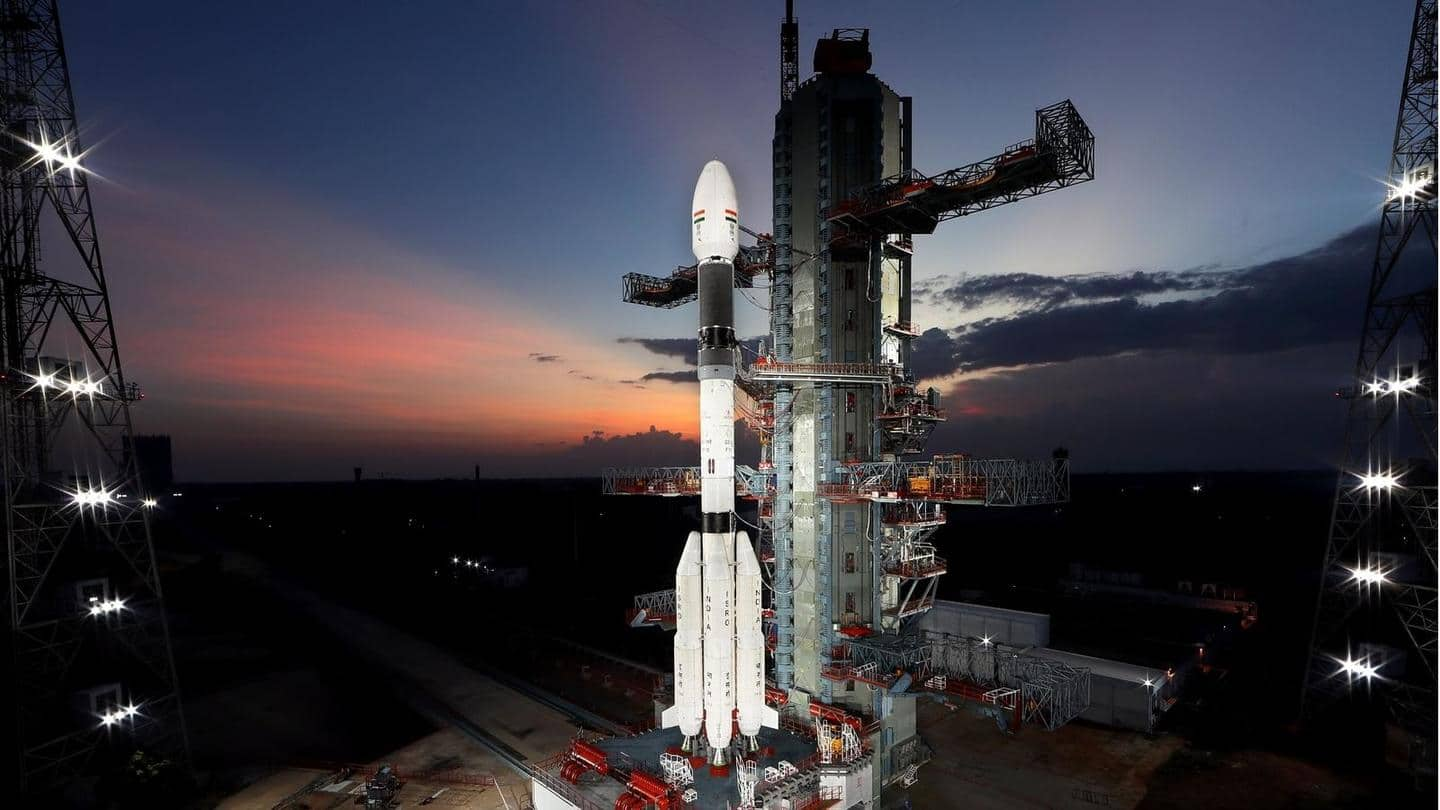
India to get new 'eye in the sky': Details here
What's the story
The Indian Space Research Organisation (ISRO) announced that the countdown to the launch of India's "eye in the sky" began on Wednesday.
The GISAT-1 Earth observation satellite (spacecraft named EOS-3) is set to blast off at 5:43 AM on Thursday from the Satish Dhawan Space Centre (SDSC) at Sriharikota in Andhra Pradesh.
Here are more details.
Surveillance
GISAT-1's images would help authorities assemble quick responses to disasters
The GSLV-F10 EOS-03 mission would make use of India's pride and joy, the Geosynchronous Satellite Launch Vehicle (GSLV) to put the satellite into orbit.
The GISAT-1 name stands for Geo Imaging Satellite. Its primary function would be to surveil "locations of interest" for India.
Using the GISAT-1's images, the government would be able to assemble quicker responses to natural disasters and short-term events.
Throughput
Satellite will relay home spectral signatures, four-five images everyday
Answering a query in the Parliament this week, the Union Minister of State in charge of the department of space Jitendra Singh specified that the GISAT-1 would relay four to five images back to ISRO on a daily basis.
The satellite will also obtain spectral signatures of agriculture, forestry, mineralogy, clouds, glaciers, and oceanography. These will help researchers identify substances and gain new insight.
Baby steps
GISAT-1 will be injected into geosynchronous transfer orbit first
ISRO explained that the GSLV rocket will inject the GISAT-1 satellite into a geosynchronous transfer orbit that would serve as an intermediate step before reaching final orbit.
This elliptical transfer orbit has an apogee (highest point) at 42,164 kilometers above sea level.
Interestingly, GISAT-1 will appear motionless in the sky while in orbit since it will travel at the rate of the Earth's rotation.
Line of sight
New satellite will not lose sight of India from space
Unlike other low-Earth orbit satellites like SpaceX's Starlink, GISAT-1's static position relative to the Earth means it won't lose sight of the Indian landmass and will be operational round the clock.
This will be the GSLV's 14th trip to space, carrying the 2,268 kg satellite.
It marks the first time that ISRO is sending an Ogive-shaped payload with a diameter of four meters.
Information
Satellite will propel itself into geostationary orbit eventually
The satellite will use onboard propulsion systems to transition from a geosynchronous transfer orbit to a geostationary orbit after the launch vehicle delivers it into the former. The space agency hasn't specified when the transition is likely to take place.
Delays
Launch cleared for August 12 at 5:48 am
The GISAT-1 launch was scheduled to take place on March 5 last year but due to pandemic-induced restrictions and subsequent delays, the launch was rescheduled twice to March and May before the August 12 launch date was chosen.
This time around, the space agency confirmed that the rocket is fueling up for the launch that happens to be just days before India's Independence Day.